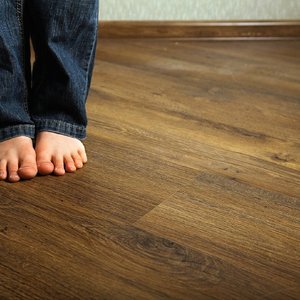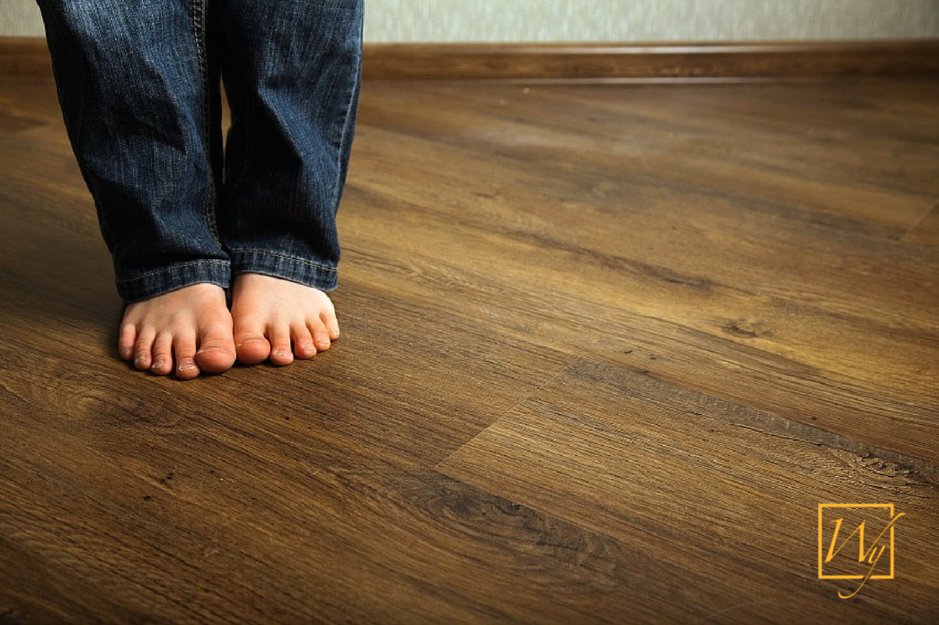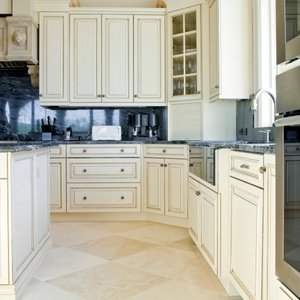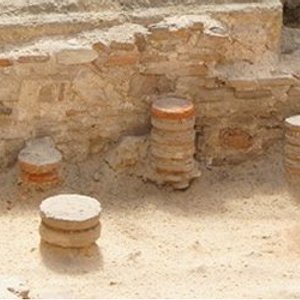 You only need to step barefoot onto a heated floor once to understand the luxurious warmth that it brings to a room. And you only need to know what it's called — in-floor heating, underfloor heating, radiant floor heating, etc. — to understand that the heating system is installed underneath the floor, thereby heating a room from the ground up.
You only need to step barefoot onto a heated floor once to understand the luxurious warmth that it brings to a room. And you only need to know what it's called — in-floor heating, underfloor heating, radiant floor heating, etc. — to understand that the heating system is installed underneath the floor, thereby heating a room from the ground up.
However, what's less obvious are the other benefits that heated floors offer as well as how they work and where they came from. That's why we've compiled our Top 5 facts about electric radiant heating that many people might not know.
1. Radiant heat keeps you warmer at a lower ambient temperature.
If you've ever stood outside on a cold day but felt warm because you were in the sunlight, you've experienced radiant infrared heat. The moment a cloud passes overhead, you'll feel drastically colder. This happens because rays from the sun generally don't heat the air — they heat the people and objects they come into direct contact with. The same goes for electric radiant heat.
In-floor electric heating warms the flooring material, which then warms the people and objects that come into direct contact with the material, keeping them warm even when the ambient temperature is lower.
In contrast, forced-air systems heat up the air, which is then dispersed throughout a home via a ventilation system. Because heat rises, the warm air rises to the ceiling and then drops down as its temperature lowers, causing residents to have cold feet even when the ambient temperature is warm, according to a remodelista.com article.
2. Nearly all flooring materials are compatible with electric radiant heating.
Flooring materials with thermal-conducting properties — such as stone, ceramic tile and concrete — conduct, transfer and hold heat most effectively while withstanding high temperatures, according to the remodelista.com article. However, WarmlyYours Radiant Heating offers three different systems to offer warm, reliable heat for all flooring types.
The TempZone™ floor-heating system is compatible with stone, tile and hardwood floors. The Environ™ floor-heating system is compatible with carpet (in the U.S. only), laminate and floating wood floors. The slab heating system was designed for installation within concrete for rooms such as a garage or sunroom. For more information, please visit www.warmlyyours.com.
3. Electric radiant heating can save you money.
Heated floors can reduce your energy bills because they increase the energy efficiency of your home. By using electric radiant heat as a primary heating source, temperature levels can be maintained more easily — and at a lower temperature — than any other form of heating. That means, for every degree you lower your thermostat, you can save 5 percent off your current heating bill. That's 25-30 percent in annual savings!
To find out exactly how much it costs to operate an electric in-floor heating system, check out the WarmlyYours Energy Use Calculator and Heat Loss Calculator.
Electric radiant heating can also reduce the amount of heat lost in your home. Forced-air heating systems, for instance, are especially subject to heat loss because of the ductwork that the air must pass through in order to reach a room.
"Because the air from the furnace and air handler has to travel through a series of tubes to get to its intended room, there are many opportunities for it to leak wherever there are small openings in the ducts," describes Michael Franco in "Which Is Better, Forced Air or Radiant Heat?," an article on bobvila.com. "Also, the ducts for this type of system often travel through cold attics or basements, increasing the chance that heat will be lost as the warm air travels to the rooms in your home."
With radiant floor heating, the heat is transferred directly from the heating element to the floor to you, so there is minimal heat loss.
4. Radiant heating originated during the Roman Empire.
The Romans are responsible for inventing the first radiant heating system called a "hypocaust" system. According to Encyclopedia Britannica, hypocaust in building construction is an open space below a floor that is heated by gases from a fire or furnace, allowing the passage of hot air to heat the room above. Typically, this version of radiant heating was used in hot rooms of the Roman baths, houses, and other buildings.
The very first radiant heat system worked by raising the floor about 2 feet above ground with stacks of tiled pillars. Spaces made inside the walls of the building allowed the hot air and smoke from the furnace to pass through the enclosed areas. Typically, the hot air from the hypocaust was led into a vertical flue located in a wall of the room so that the hot air and smoke could escape into the open air after heating the enclosed space.
5. Radiant heat can improve your mood.
Multiple studies have linked warmth with positive feelings.
In an experiment by John Bargh, a social psychologist at Yale University, and Lawrence Williams, a marketing professor at the University of Colorado at Boulder, a woman met volunteers in the lobby carrying a cup of coffee, a clipboard and two textbooks. During the elevator ride to the fourth floor, she asked a volunteer to hold her cup as she took notes. The volunteers were later read a description of a hypothetical person and then were asked for their impressions. If they had been handed a warm cup of coffee, their description was significantly warmer and friendlier when compared to the volunteers who had been handed a cold cup.
In another study, volunteers who felt a warm object (compared to volunteers who held a cool object) were more generous when deciding whether to give away a gift or keep it for themselves.
"Physical warmth can make us see others as warmer people but can also cause us to be warmer — more generous and trusting — as well," Bargh said in an latimes.com article.
According to neuroscientists, "Physical warmth activates circuits in the brain associated with feelings of psychological warmth. The insular cortex, or insula, plays a critical role in this crossover between the outside world and our experience of it," writes Jena Pincott in a Wall Street Journal article.
Using this logic, warm floors can make you a warmer and more generous person without even realizing it.
Do you know of some other interesting tidbits about radiant heating? If so, please share them with us on the WarmlyYours Facebook page or tweet us at @WarmlyYours. And if you want to learn more about radiant heating, be sure to check out our newly revamped website at www.warmlyyours.com.
Sources:
www.warmlyyours.com/products/radiant-heating
www.bobvila.com/articles/radiant-floorvs-forced-air-heating/#.VSwxo5N4o0d
www.britannica.com/EBchecked/topic/279869/hypocaust
http://articles.latimes.com/2008/oct/24/science/sci-hot24
www.wsj.com/articles/SB10001424052702304520804576349213528554824









